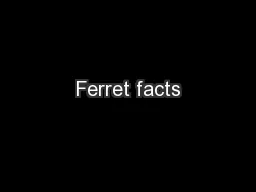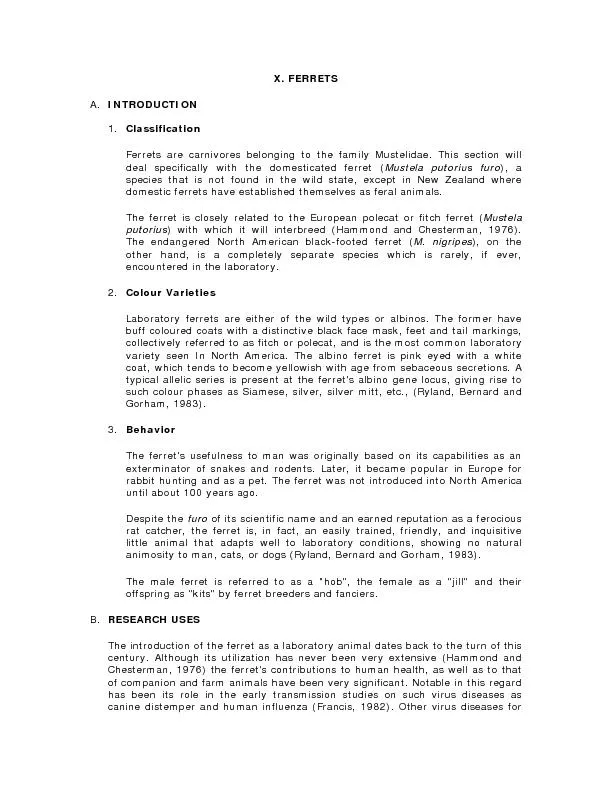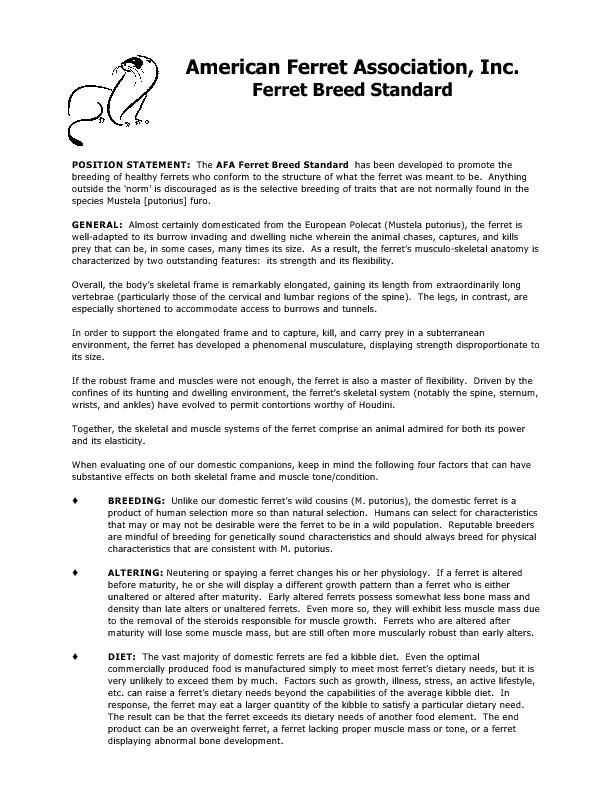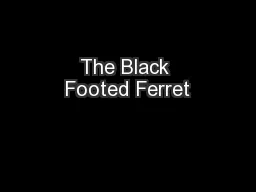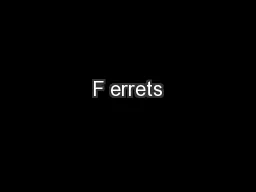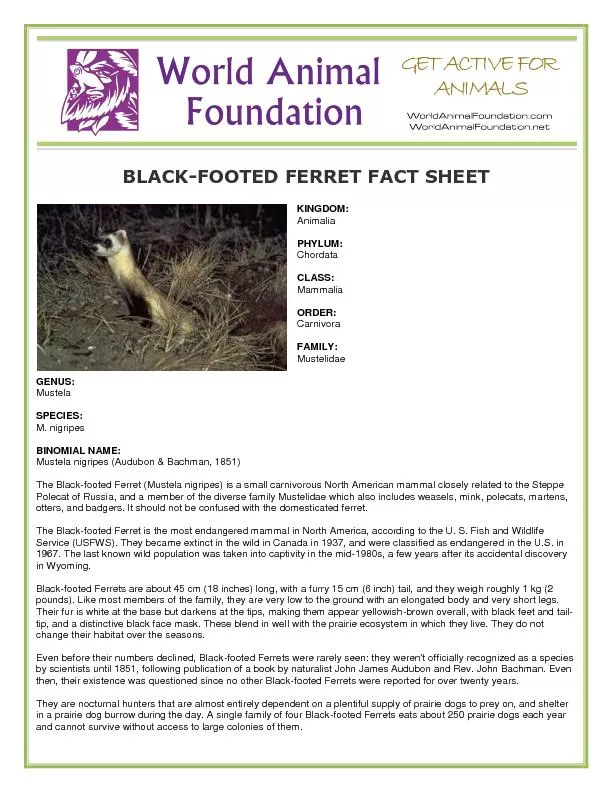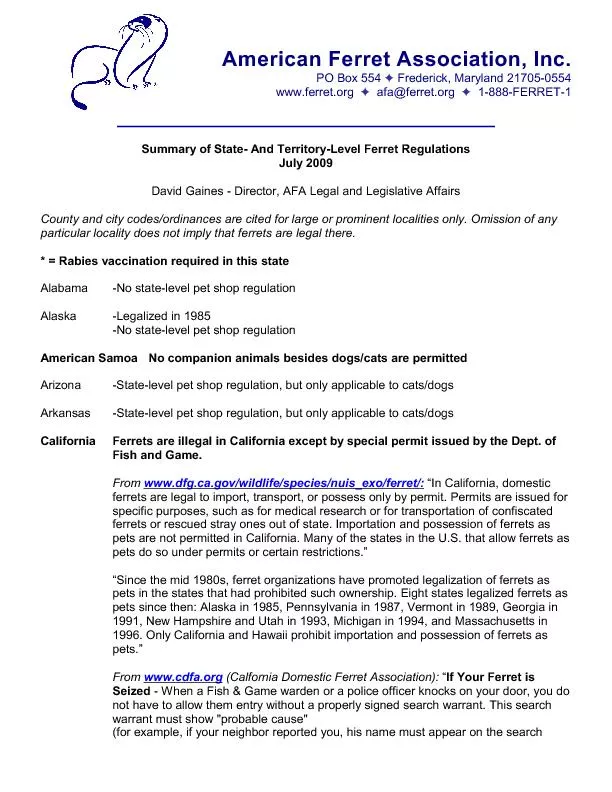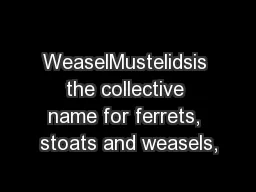PDF-Ferret facts
Author : calandra-battersby | Published Date : 2017-09-26
3 4 Habitat The blackfooted ferret inhabits temperate grasslands where they eat prairie dogs and use their burrows and tunnels to sleep and raise their youngThey
Presentation Embed Code
Download Presentation
Download Presentation The PPT/PDF document "Ferret facts" is the property of its rightful owner. Permission is granted to download and print the materials on this website for personal, non-commercial use only, and to display it on your personal computer provided you do not modify the materials and that you retain all copyright notices contained in the materials. By downloading content from our website, you accept the terms of this agreement.
Ferret facts: Transcript
Download Rules Of Document
"Ferret facts"The content belongs to its owner. You may download and print it for personal use, without modification, and keep all copyright notices. By downloading, you agree to these terms.
Related Documents

